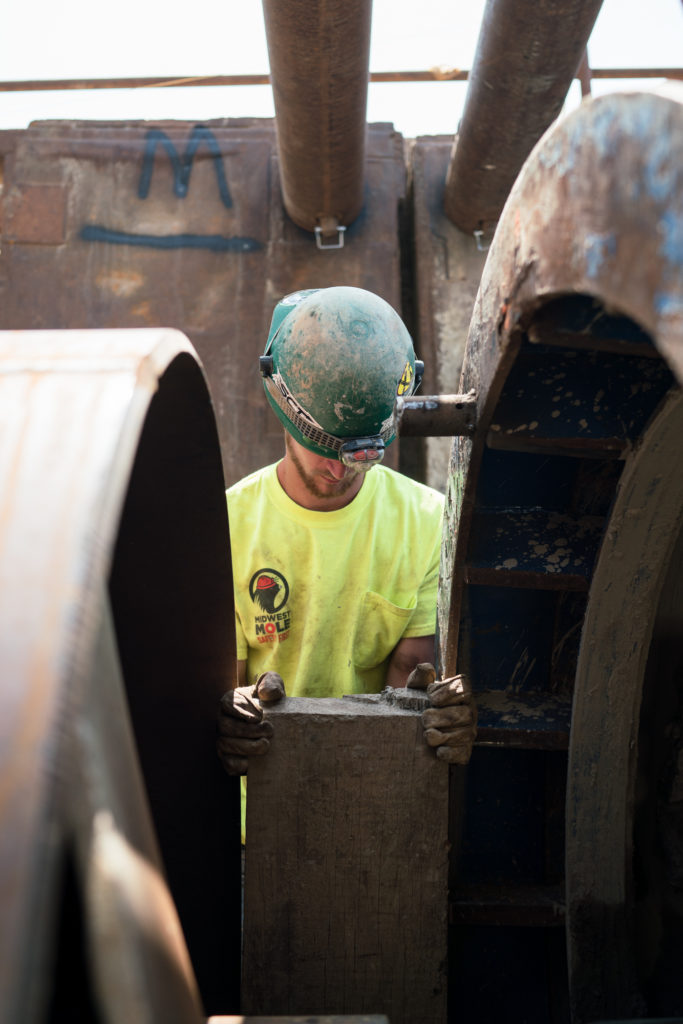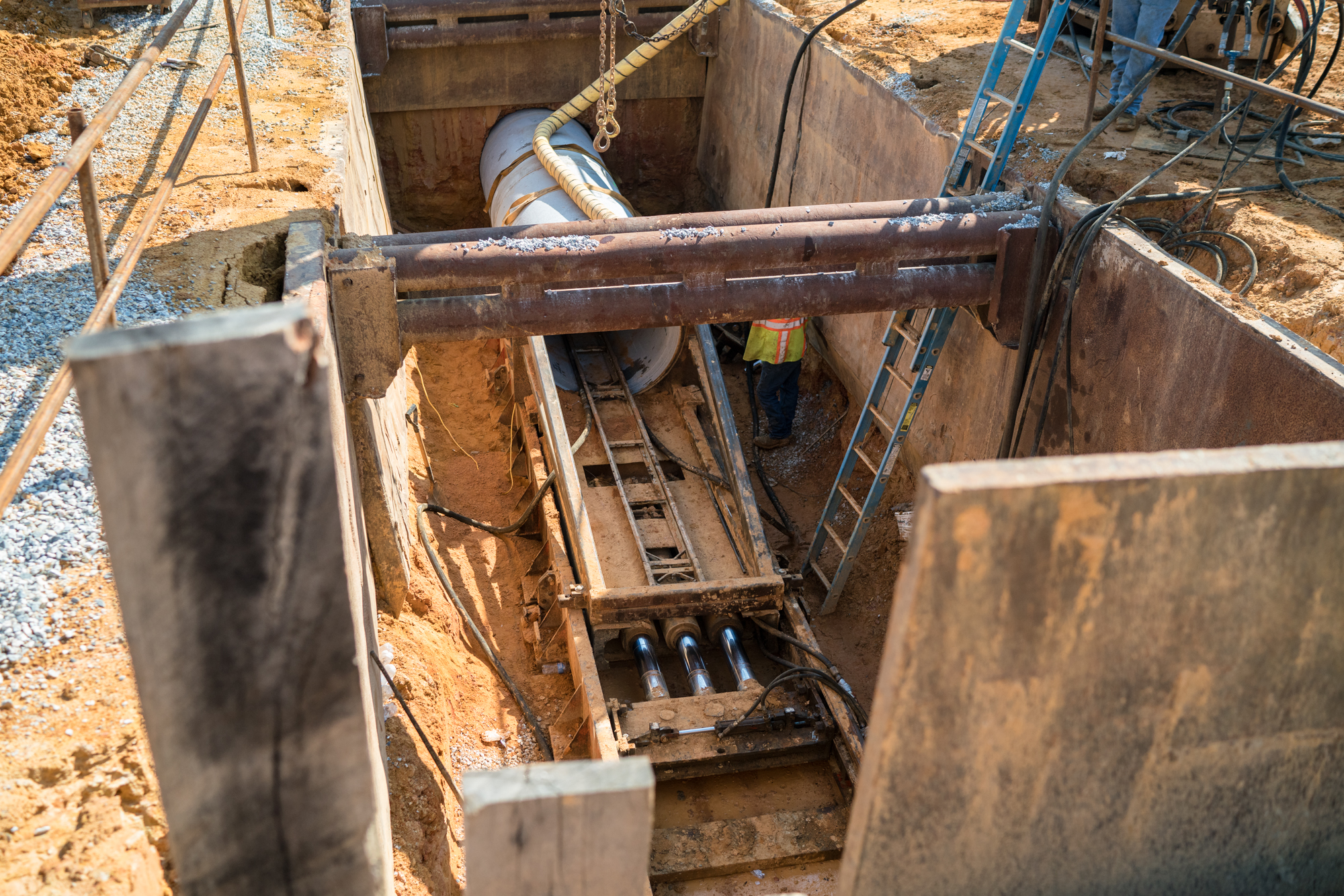Are you planning an underground utility or drainage project? One of the first significant decisions to make is whether open cut or trenchless is the best option.
Often enough, external conditions decide for you.
Due to existing infrastructure that may be above where the new installation needs to go, there may not be enough room to do open cut. This includes highly-trafficked roadways, buildings, and existing utilities that are expensive to reroute, to name a few.
Even when there isn’t anything immediately in the way, you may have an exceptionally narrow job site — like working in an alleyway that doesn’t have room to maneuver an excavator — that makes trenchless the better option.

Besides the low impact of trenchless construction, there are a ton of trenchless methods to choose from, too.
You can have a conventional auger bore, where you’re jacking and boring a steel pipe in the ground, with a smaller carrier pipe inside it. Maybe directly jacking concrete, water, sanitary sewer, or fiberglass pipe is the best bet. Perhaps it’s a small diameter utility, such as a two-inch gas or water line, that calls for a directional drill.
Beyond new construction, you have the rehabilitation capabilities of trenchless.
One of the most popular methods is slip lining, where you slide a smaller diameter new pipe inside of an existing one, whether that’s a plastic or fiberglass pipe. It’s a great option when you have a sewer line that hasn’t completely failed but needs replacing, for example. Trenchless rehab is often superior and cheaper because, with a sewer line that’s buried deep below the ground, you’d have to dig a big trench compared to just opening it up at the ends.
The significant advantage of trenchless is the flexibility it gives you to be able to tackle a wide variety of projects with minimal impact. You can install or rehabilitate infrastructure without having to dig up the entire alignment from the top down, and disturbing whatever might be on top of it. Trenchless also typically has fewer traffic disruptions, which can have significant effects on businesses and residents in the area.
Trenchless also has environmental impact advantages, too. When you’re doing a trenchless installation, you may have minimal equipment and a small work area. However, an open cut installation adds much more equipment and material, plus traffic delays.
Keeping all of these aspects in mind, it’s important to note that while trenchless installation can be more expensive than open cut, the life cycle cost may be lower when you factor in the total costs. That includes an open cut’s impact on area residents and businesses and the environmental impact.

